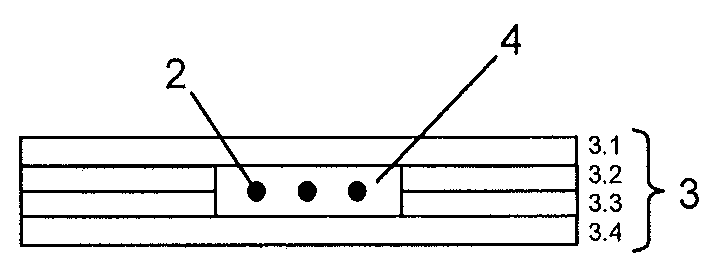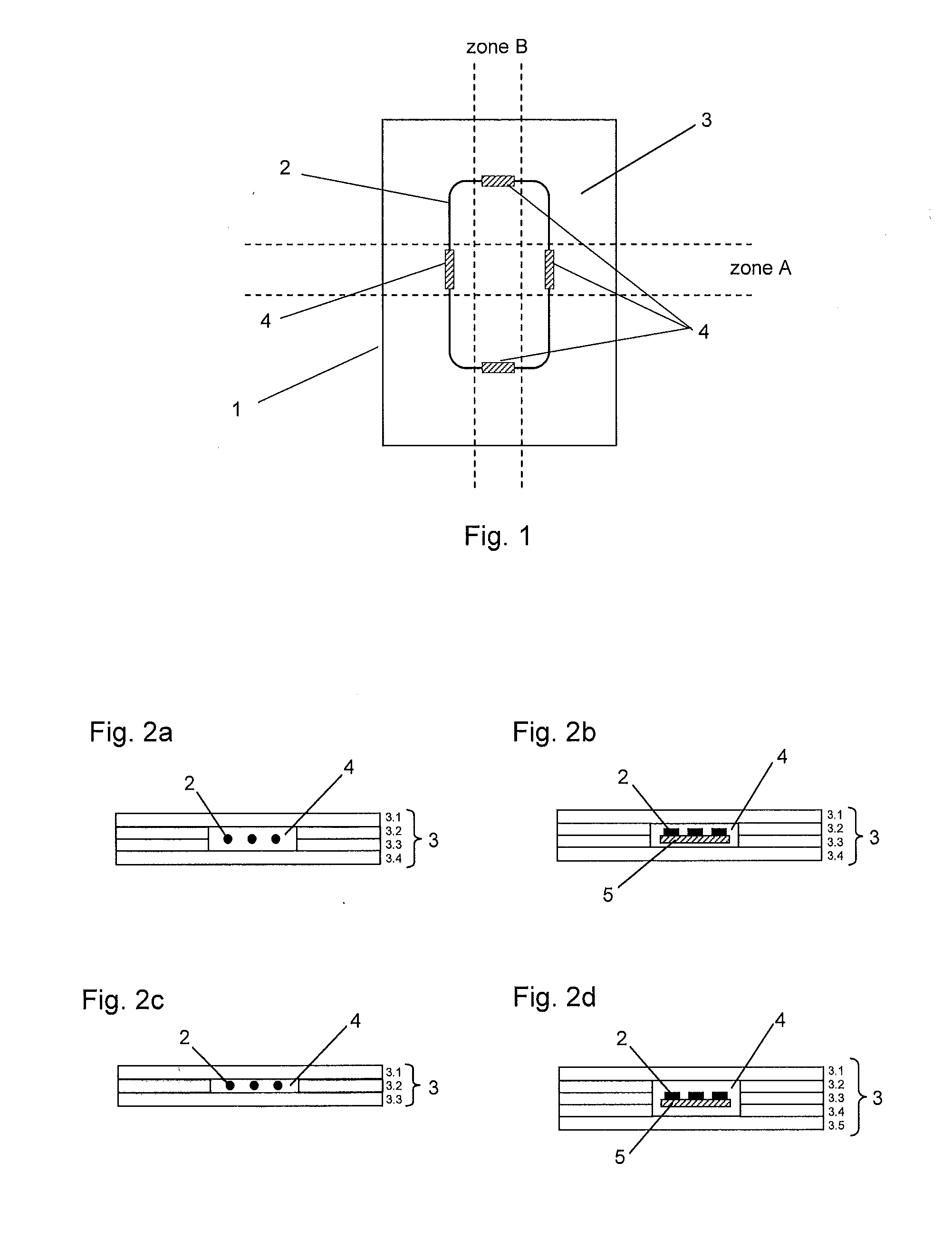Anti-crack means for wire antenna in transponder
a wire antenna and anti-crack technology, applied in the field of transponders, can solve the problems of repeated bending of the passport, major threats to the enclosed rfid transponder, and altering the electrical properties of the antenna
- Summary
- Abstract
- Description
- Claims
- Application Information
AI Technical Summary
Benefits of technology
Problems solved by technology
Method used
Image
Examples
Embodiment Construction
[0042]Passport and other similar documents are usually made from several layers which are linked to one another by adhesives or thermoplasts.
[0043]FIG. 1 shows, in top view, a functional laminate 1 forming a layer / support, suitable for use for example in the cover of a passport, with an antenna 2 and cavities 4 where an adhesive or thermoplast layer used in the fabrication of the support / laminate is partially left out in the proximity of the antenna 2. This absence of adhesive or thermoplast or, more generally material layer allows a mechanical decoupling of the antenna from its environment in accordance with the principles of the present invention.
[0044]The cavities 4 are of course chosen in zones (as A or B in FIG. 1) which are most likely to be deformed or buckled considering the shape of the functional laminate and the product in which it is to be used.
[0045]FIGS. 2a and 2c show a section of a decoupled area between the antenna 2 and the surrounding material using an example of ...
PUM
 Login to View More
Login to View More Abstract
Description
Claims
Application Information
 Login to View More
Login to View More - R&D
- Intellectual Property
- Life Sciences
- Materials
- Tech Scout
- Unparalleled Data Quality
- Higher Quality Content
- 60% Fewer Hallucinations
Browse by: Latest US Patents, China's latest patents, Technical Efficacy Thesaurus, Application Domain, Technology Topic, Popular Technical Reports.
© 2025 PatSnap. All rights reserved.Legal|Privacy policy|Modern Slavery Act Transparency Statement|Sitemap|About US| Contact US: help@patsnap.com



